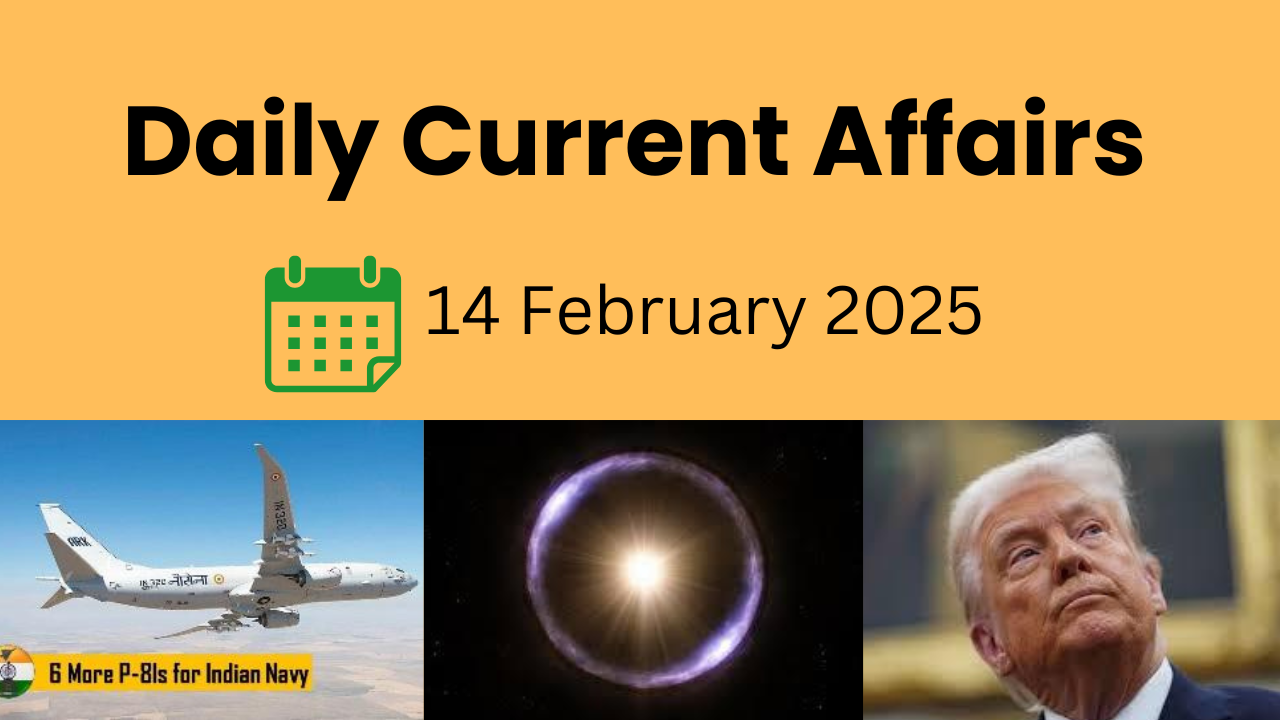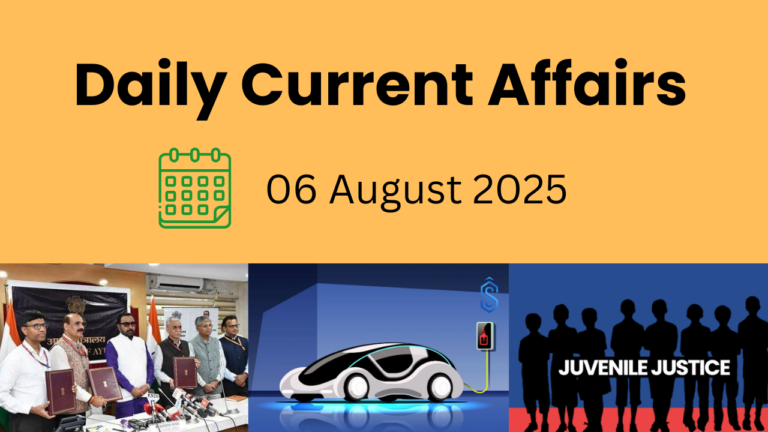1. Earth’s Inner Core is Undergoing Structural Changes
Context: A recent study published in Nature Geoscience has revealed that Earth’s inner core is undergoing structural changes, challenging previous assumptions about its stability and composition. Scientists have observed that the inner core is not as rigid as once believed and that its rotation is slowing down, which could have implications for Earth’s day-length and internal dynamics.
Key Insights from the Study:
How Was the Study Conducted?
- Seismic Waves Analysis: Researchers used seismic waves (shockwaves from earthquakes) to study the Earth’s internal layers.
- These waves travel through different layers of Earth, similar to how CT scans help visualize the human body’s internal structures.
Major Observations:
- Previously, scientists assumed that the inner core was solid and rigid, but the new study suggests it is softer near the surface.
- The molten outer core is influencing the solid inner core, potentially altering its rotation and impacting Earth’s day-length.
- It was earlier believed that the inner core rotates independently due to its interactions with the mantle. However, this new research indicates that its rotation is slowing down over time.
Understanding Earth’s Layers:
1. Crust – The Outer Shell:
- The thinnest layer (35 km on continents, 5 km on ocean floors).
- Continental Crust: Made of silica and alumina (SIAL).
- Oceanic Crust: Made of silica and magnesium (SIMA).
2. Mantle – The Middle Layer:
- Extends from the Moho’s discontinuity to 2,900 km deep.
- Asthenosphere (Upper Mantle, up to 400 km deep): A semi-molten layer, source of magma.
- Lithosphere: Includes the crust and upper mantle, with a thickness of 10-200 km.
- Lower Mantle: Solid and extends beyond the asthenosphere.
3. Core – The Deepest Layer:
- Begins at 2,900 km depth and has extremely high temperature and pressure.
- Composed of nickel and iron (NiFe layer).
Outer Core:
- In a liquid state.
- Known for its turbulence, which generates Earth’s magnetic field.
Inner Core:
- Previously believed to be rigid and solid, but new findings suggest it has a softer surface.
- The turbulent outer core was thought to have little impact on the inner core, but the latest research indicates it may influence its motion and rotation.
Why Are These Findings Important?
- Changes in Core Rotation: The slowing rotation of the inner core could impact Earth’s day-length over long periods.
- New Understanding of Earth’s Dynamics: The interaction between the inner and outer core challenges traditional models of Earth’s structure.
- Geophysical Implications: These findings could help scientists better understand seismic activities, magnetic field variations, and long-term planetary changes.
This research redefines our knowledge of Earth’s inner workings and paves the way for further studies on planetary evolution and deep-Earth processes.
2. Could Trump Break the Capital Controls Taboo with a Tobin Tax?
Context: The topic of investment barriers has traditionally been avoided by U.S. policymakers, driven by concerns that even discussing such measures could spark panic in the global financial market. However, under Donald Trump’s economic agenda, the conversation around restrictions on inward investment has become more open, signaling a potential shift in how the U.S. handles its relationship with foreign capital.
Understanding Investment Barriers:
Investment barriers are factors that hinder access to markets or the ability to make investments. These can include:
- Financial Barriers: High costs, large capital requirements, and illiquidity.
- Regulatory Barriers: Government restrictions, high taxes, and legal limitations.
- Psychological Barriers: Risk aversion, lack of knowledge, and behavioral biases.
Trump’s Zero-Sum Trade View:
Trump’s economic strategy is often described through a zero-sum lens, viewing international trade as a competition where gains by one nation come at the expense of another. His administration has sought to address U.S. trade deficits, which he believes arise from countries undervaluing their currencies to gain an advantage in trade. According to this view, countries with trade surpluses tend to invest their savings in U.S. assets, which increases the value of the dollar and, in turn, worsens U.S. trade competitiveness by making American goods more expensive abroad.
Tariffs as a Tool:
To reduce the trade deficit, Trump has used tariffs as an economic weapon, imposing them on imports to incentivize local production and reduce reliance on foreign goods. However, this strategy has led to an unintended consequence: a stronger dollar. While tariffs are meant to limit imports, the increase in the dollar’s value worsens the trade balance and further reduces the competitiveness of U.S. manufacturing.
The core issue, as critics argue, is the relentless global demand for U.S. assets, which sustains the dollar’s strength and increases the trade deficit. Tariffs, then, do not address the underlying cause.
Enter the Tobin Tax:
To combat the growing trade deficit and capital inflows, James Tobin’s idea of a Tobin tax—a tax on currency transactions—has been revisited. Initially proposed in the 1970s, the Tobin tax aims to slow down excessive cross-border capital flows, particularly those driving the overvaluation of the U.S. dollar. The goal would be to impose a tax on foreign investment coming into the U.S. to curb the financial inflows that exacerbate the dollar’s strength and worsen the trade deficit.
Tobin Tax: A Tool to Regulate Capital Flows:
The Tobin tax would:
- Impose a levy on currency transactions, potentially reducing the speed of speculative capital movements.
- Generate substantial revenue without significantly reducing the volume of global capital flows, making it an attractive alternative to tariffs.
- Help manage capital inflows and prevent the dollar from becoming too strong, which could mitigate trade imbalances.
Some economists believe a Tobin tax would be a more effective tool than tariffs for addressing the trade deficit. By taxing cross-border capital flows, it would reduce the incentive to invest in U.S. assets purely for speculative reasons, without significantly hurting productive foreign investment.
Potential Risks of the Tobin Tax:
However, imposing a Tobin tax or similar capital controls could have significant risks and negative consequences:
- Impact on the Dollar: The mere suggestion of restrictions on foreign investment could lead to a sharp decline in the dollar’s value, destabilizing both the U.S. financial markets and the broader global economy.
- Impact on U.S. Markets: A restriction on foreign investment could result in a massive downturn in U.S. stock and bond markets, causing significant economic disruption. Many U.S. companies rely on foreign capital for growth and expansion, and a sudden reduction in investment could lead to market instability and lower corporate valuations.
Conclusion: A Bold Shift or Dangerous Gamble?
Would Donald Trump break the capital controls taboo by imposing a Tobin tax? While the idea of taxing cross-border capital flows could provide a way to address the trade deficit without resorting to tariffs, it also carries substantial risks. The strong dollar has been a double-edged sword for the U.S. economy, benefitting investors while hurting manufacturing competitiveness. By taxing foreign investment, Trump could attempt to slow this cycle, but the potential consequences—from dollar devaluation to market turmoil—could outweigh the benefits.
Whether or not Trump will push forward with such a drastic measure remains uncertain, but his zero-sum view of trade and the ongoing challenges of balancing the current account suggest that capital controls may not be entirely off the table in his economic policy toolkit.
3. Should Convicted Persons Be Allowed to Contest Elections?
Context: The Supreme Court of India is currently hearing petitions demanding a lifetime ban on convicted individuals from contesting elections. This debate raises critical questions about legal provisions, judicial precedents, and the broader implications of criminalization in politics.
Legal Provisions Under the Representation of the People Act, 1951:
Disqualification Based on Conviction:
- Section 8(3): A person convicted of a criminal offense and sentenced to at least two years of imprisonment is disqualified from contesting elections.
- This disqualification period lasts for six years after the person’s release from prison.
Disqualification for Specific Offenses:
- Section 8(1) mandates automatic disqualification for certain serious crimes, irrespective of the sentence length. These include:
- Rape
- Offenses under the Protection of Civil Rights Act (Untouchability)
- Unlawful Activities (Prevention) Act (UAPA)
- Prevention of Corruption Act
- The disqualification extends for six years beyond release from prison.
Election Commission’s Power to Remove Disqualification:
- Section 11: The Election Commission (EC) has the authority to reduce or remove the disqualification period.
- Controversy: In 2019, the EC reduced the disqualification period of Prem Singh Tamang, allowing him to contest elections despite a corruption conviction.
Key Supreme Court Judgments on Decriminalization of Politics:
Association for Democratic Reforms (ADR) Case (2002):
- Mandated candidates to disclose their criminal records while filing nominations.
- Strengthened voter awareness and transparency in elections.
CEC vs. Jan Chaukidar (2013):
- The Patna High Court ruled that undertrial prisoners are not eligible to contest elections since they are not ‘electors.’
- The Supreme Court upheld this ruling, but Parliament later overturned it through an amendment.
Lily Thomas Case (2013):
- The Supreme Court struck down Section 8(4) of the RP Act, which previously allowed convicted legislators to continue in office if they filed an appeal.
- As a result, a sitting legislator is now immediately disqualified upon conviction.
Arguments For a Lifetime Ban on Convicted Politicians:
- Strengthening Electoral Integrity:
- Politics should be free from criminal influence.
- Ensuring clean governance promotes public trust in democracy.
- Preventing Misuse of Power:
- Convicted individuals may use political influence to manipulate legal proceedings.
- A lifetime ban discourages the misuse of legal loopholes.
- Global Best Practices:
- Many democracies impose strict disqualification rules on convicted politicians.
- India, as the world’s largest democracy, should set a strong precedent.
Arguments Against a Lifetime Ban on Convicted Politicians:
- Right to Rehabilitation:
- A lifetime ban violates the fundamental right to seek public office after serving a sentence.
- Other professionals (doctors, lawyers, bureaucrats) do not face lifetime bans for convictions.
- Judicial Delays and Misuse:
- False cases and politically motivated convictions are common in India.
- A lifetime ban could be misused to eliminate political rivals.
- Existing Laws Already Ensure Disqualification:
- Current disqualification rules (six-year ban after release) strike a balance between punishment and rehabilitation.
Conclusion: The Need for a Balanced Approach
The debate over whether convicted individuals should face a lifetime ban from elections is complex. While preventing criminal elements from entering politics is crucial, a blanket lifetime ban may be excessive and prone to misuse. A potential middle path could involve:
- Stricter scrutiny of cases involving serious crimes like corruption and sexual offenses.
- Enhanced judicial safeguards to prevent misuse of disqualification provisions.
- Public accountability mechanisms to ensure greater transparency in candidate selection.
As the Supreme Court deliberates on this issue, its verdict will shape the future of ethical governance and electoral democracy in India.
4. India’s Obscenity Laws: Ranveer Allahbadia Case & Legal Perspectives
Context: The Mumbai Police have initiated an investigation into YouTuber Ranveer Allahbadia, comedian Samay Raina, and Apoorva Makhija for allegedly making obscene remarks on the YouTube show India’s Got Latent. The case has sparked discussions on obscenity laws, free speech, and digital content regulation in India.
Obscenity Laws in India:
Section 294 – Punishment for Obscene Material:
- Prohibits the sale, import, export, advertisement, or profit from obscene content (books, paintings, electronic media, etc.).
- Defines obscene material as anything lascivious, excessively sexual, or corrupting to viewers.
- Punishment: Up to 2 years imprisonment and a fine of up to 5,000 (first offense).
Obscenity in Digital Spaces: Section 67 of the IT Act, 2000:
- Punishes the publishing or transmission of obscene material online.
- Uses the same obscenity definition as Section 294.
- Punishment: Up to 3 years imprisonment and a fine of 5 lakh (first offense).
Evolution of the Court’s Understanding of Obscenity:
Early Rulings: The Hicklin Test
- Ranjit D Udeshi v. State of Maharashtra (1964): The Supreme Court ruled that the novel Lady Chatterley’s Lover was obscene.
- Based on the Hicklin test (UK, 1868), which judged material by whether it could “deprave and corrupt” vulnerable individuals.
International Shifts in Obscenity Laws:
- UK (1959): Introduced the Obscene Publications Act, requiring works to be judged “as a whole.”
- US (Roth v. United States, 1957): Adopted the community standards test, assessing material based on contemporary social norms.
India’s Shift to the Community Standards Test:
- Aveek Sarkar v. State of West Bengal (2014): The Supreme Court ruled that obscenity must be assessed in context, rejecting the Hicklin test.
- Example: A nude photograph of Boris Becker and his fiancée was not considered obscene, as the content was judged based on evolving community standards.
Obscenity in Online Content: Court Rulings
Supreme Court Ruling on College Romance (March 2024):
- The court quashed obscenity charges against the makers of the web series College Romance under Section 292 IPC and Section 67 IT Act.
- Key Arguments:
- Obscenity ≠ Profanity: Foul language alone does not constitute obscenity.
- Context Matters: Obscenity must arouse sexual or lustful thoughts, which the show did not.
Application of the Community Standards Test:
- The court ruled that language reflecting anger, frustration, or humor is not inherently obscene.
- Set a precedent for online content, making it harder for authorities to misuse obscenity laws.
Ranveer Allahbadia Controversy: Legal Charges & Implications
The FIR Against Ranveer Allahbadia & Others:
- Mumbai Police have filed an FIR against YouTuber Ranveer Allahbadia, comedian Samay Raina, and Apoorva Makhija.
- The controversy stems from alleged offensive remarks made on India’s Got Latent, targeting the Indian family system and religious sentiments.
Legal Provisions Invoked:
| Section | Description | Punishment |
| Section 79 | Insulting the modesty of a woman through words or gestures. | Up to 3 years imprisonment + fine. |
| Section 196 | Promoting enmity between groups based on religion, race, etc. | Up to 3 years imprisonment, fine, or both. |
| Section 296 | Publicly performing obscene acts, songs, or words. | Up to 3 months imprisonment, fine, or both. |
| Section 3(5) | If multiple people act with a common intent, all are equally liable. | Punishment based on the offense committed. |
Key Allegations:
- Demeaning Indian family values and offending religious sentiments.
- Inappropriate discussions on sex and parents on a public platform.
- Complaints claim that the show crossed ethical boundaries of free speech and responsible content creation.
Conclusion: Balancing Free Speech & Obscenity LawsThe Ranveer Allahbadia case highlights the complex intersection of free speech, morality, and obscenity laws in India. While obscenity laws are necessary to regulate harmful content, they must not be misused to suppress artistic freedom and open discussions.
5. Rare Einstein Ring Discovered by ESA’s Euclid Telescope
Context: The European Space Agency’s (ESA) Euclid space telescope has spotted a rare Einstein ring surrounding the galaxy NGC 6505, located nearly 590 million light-years from Earth.
Did you know? A light-year is the distance light travels in a year, approximately 9.46 trillion kilometers!
What is an Einstein Ring?
Overview:
An Einstein ring is a circular halo of light that appears around a massive celestial object, such as a galaxy, black hole, or dark matter cluster.
How Does It Form? – Gravitational Lensing:
This phenomenon occurs due to gravitational lensing, where a massive object’s gravity bends and amplifies light from a distant background galaxy. When the alignment is nearly perfect, it creates a complete ring of light.
- The object bending the light is called a gravitational lens.
- The Euclid telescope detected this ring due to the bending effect of NGC 6505, which distorted light from an unnamed galaxy located 4.42 billion light-years away.
Why is it Called an Einstein Ring?
The concept originates from Albert Einstein’s General Theory of Relativity, which predicted that massive objects warp space-time, curving the path of light around them.
How Rare are Einstein Rings?
- First discovered in 1987, Einstein rings are extremely rare, appearing in less than 1% of observed galaxies.
- They are not visible to the naked eye and require advanced space telescopes like Euclid, Hubble, or James Webb for observation.
Scientific Importance of Einstein Rings:
Einstein rings serve as natural cosmic magnifying glasses, helping astronomers:
- Study distant galaxies that would otherwise be invisible.
- Investigate dark matter, revealing its distribution in the universe.
- Explore dark energy, the mysterious force driving the universe’s accelerated expansion.
Similar Phenomena: Einstein Cross:
Einstein Cross is another gravitational lensing effect, where instead of a ring, a distant galaxy’s light splits into four distinct images, creating a cross-like pattern around the foreground galaxy.
Final Thought:
The discovery of an Einstein ring around NGC 6505 is a fascinating breakthrough in astrophysics, offering deeper insights into the universe’s hidden structures and cosmic forces.
6. P-8I Aircraft: India’s Cutting-Edge Maritime Patrol Aircraft
Context: India is set to revive its proposal to acquire six additional P-8I long-range maritime patrol aircraft from the United States. This move aims to bolster the Indian Navy’s surveillance capabilities, reinforcing its strength in maritime operations.
About the P-8I Aircraft:
The P-8I Poseidon is a long-range, multi-mission maritime patrol aircraft designed and built by Boeing, a leading U.S. aerospace company.
- It serves as a successor to the Indian Navy’s aging Tupolev Tu-142 aircraft.
- The P-8I is a specialized variant of the P-8A Poseidon, which is extensively used by the United States Navy.
- With cutting-edge sensors, advanced weapons systems, and exceptional range, the P-8I can detect and neutralize threats from submarines, surface vessels, and aerial adversaries.
Key Capabilities of the P-8I:
The P-8I Poseidon is a versatile aircraft capable of executing multiple missions, including:
- Anti-Submarine Warfare (ASW) – Tracking and neutralizing enemy submarines.
- Anti-Surface Warfare (AsuW) – Engaging hostile surface vessels.
- Maritime Surveillance & Reconnaissance – Conducting long-range patrolling and intelligence gathering.
- Intelligence, Surveillance & Reconnaissance (ISR) – Providing real-time battlefield awareness.
P-8I Aircraft Specifications:
| Feature | Details |
| Length | 39.47 m |
| Wingspan | 37.64 m |
| Height | 12.83 m |
| Crew Members | 9 |
| Maximum Takeoff Weight | 85,139 kg |
| Maximum Speed | 789 km/h |
| Maximum Altitude | 12,496 m |
| Operational Range | 2,222+ km |
| Time on Station | 4+ hours |
The P-8I’s endurance and high-speed capabilities make it a formidable asset for maritime security, ensuring that India maintains dominance over its waters.
Why is the P-8I Important for India?
Strengthens India’s Maritime Defense: Enhances surveillance and tracking of hostile submarines and warships.
Supports Regional Stability: Plays a pivotal role in Indo-Pacific security, helping counter growing threats in the Indian Ocean Region (IOR).
Enhances Strategic Partnerships: Strengthens India’s defense ties with the U.S., promoting defense cooperation and interoperability.
Conclusion:
The P-8I Poseidon is a game-changer in maritime security, offering unmatched reconnaissance, warfare, and surveillance capabilities. With India planning to procure more P-8Is, the Indian Navy will further fortify its maritime defense, ensuring enhanced security and strategic dominance in the region.




